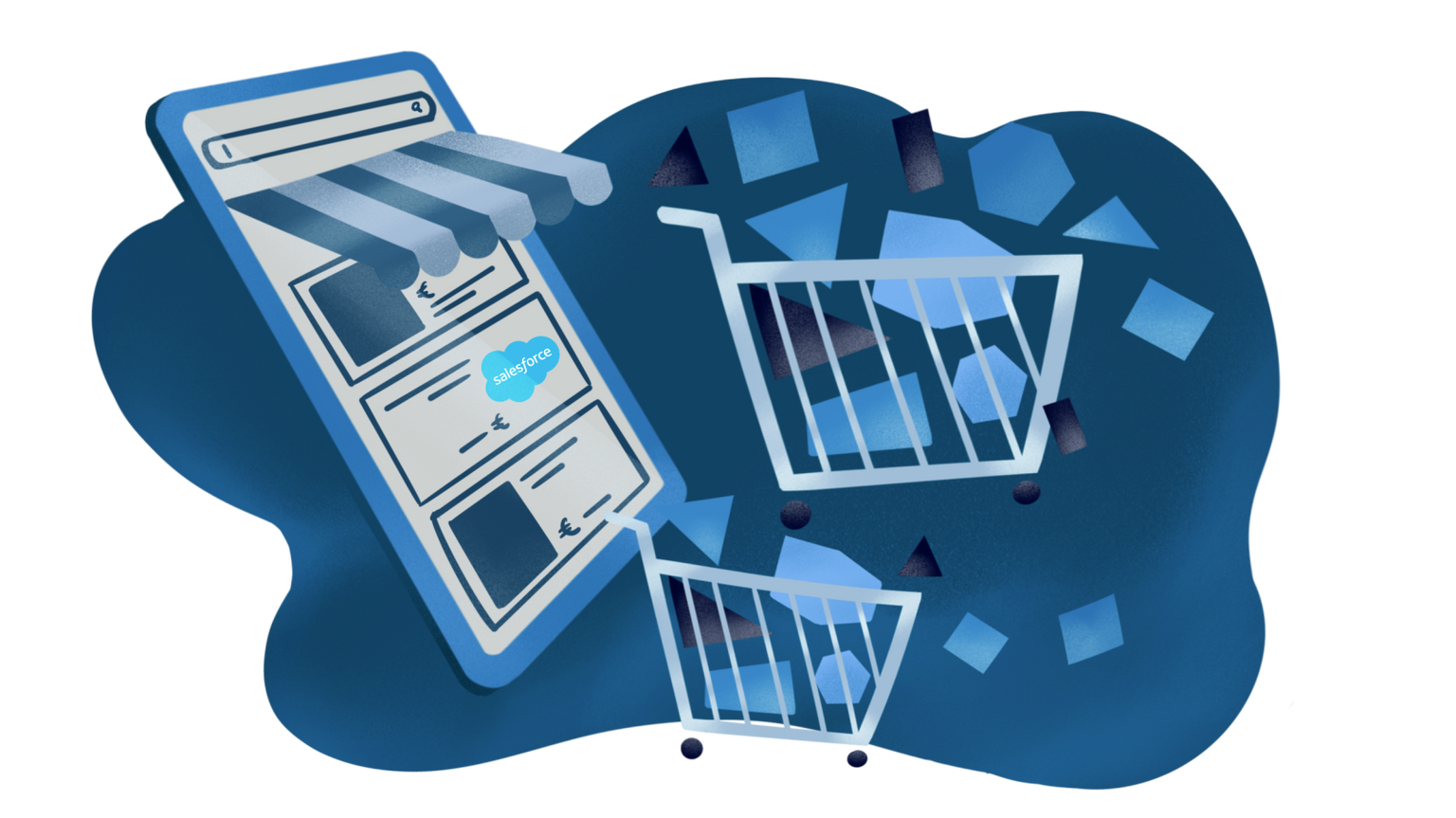Salesforce Commerce Cloud: the solution for big numbers
Technology
From personalized experiences to multichannel solutions: the benefits of Salesforce Commerce Cloud

Shaky connections, intense sessions of Snake on a black and white screen, early web chats, and Matrix on the big screen – that’s the 1999 many remember. For me, however, that year marks the beginning of Salesforce.
Born from the vision of former Oracle executives Marc Benioff, Parker Harris, Dave Moellenhoff, and Frank Dominguez, the Californian software house quickly becomes a leader in the world of Marketing Automation.
Among the frontrunners of SaaS CRM, stepping into the e-commerce scene is Salesforce Commerce Cloud, albeit a few years behind the competition.
Brief History of SFCC
Salesforce makes its debut in the e-commerce realm by acquiring Sitegenesis, the pioneering e-commerce development platform from Demandware. This move offers a ‘ready-to-use‘ solution, enabling an instant foothold in the market.
However, subsequent demands for modularity and system extensibility convince the company to revamp its approach.
Key Features of Salesforce Commerce Cloud
In 2018, Salesforce introduced the Salesforce Front-End Reference Architecture (SFRA) to address limitations of its previous solution. Since its launch, SFRA has emerged as the cornerstone platform, driving forward the evolution of Salesforce’s e-commerce strategy.
Structured on data design, SFRA provides a robust technical foundation and advanced features to enhance the customer experience.
Salesforce Technology for E-commerce
SFRA functions as a core module to which functionalities and necessary services are added. Salesforce is system-agnostic when it comes to connecting external systems but leans toward its Marketing and Order Management solutions.
SFRA stands out with its Mobile-First approach and highly modular nature, operating both back-end and front-end in JavaScript. The platform is cloud-based and enables the creation of multi-site stores.
Additionally, SFCC allows the integration of headless solutions with Node and React, streamlining front-end programming. Local development occurs using the well-known VS Code and Node. Instead of working on a local server, the code is deployed to a sandbox, a programming environment part of the remote instance hosting all e-commerce areas (production, staging, testing, and developer sandbox).
Einstein lives on Salesforce Commerce Cloud
The innovation of Salesforce Commerce Cloud shines through its integration of Einstein, an advanced artificial intelligence directly embedded within its framework.
Often underestimated, Einstein offers a myriad of advanced features that go beyond the capabilities of traditional e-commerce systems.
Thanks to Einstein, businesses can achieve greater personalization in customer experiences. Real-time data analysis enables the identification of purchasing patterns, empowering businesses to anticipate market trends and adjust sales strategies accordingly.
SFCC: Personalized Experience and Other Pros
There are multiple reasons to choose Salesforce Commerce Cloud:
Omnichannel capabilities provide a unified shopping experience across various channels, including websites, mobile devices, social media, and physical stores.
- It offers high customization, proving to be adaptable to specific business needs.
- Easily integratable with other platforms, such as CRM or payment systems, ensuring efficient data flow between them.
- Provides advanced analytical tools to monitor sales performance, analyze buyer behavior, and gain insights for strategic decision-making.
Salesforce Commerce Cloud also has its drawbacks
When exploring different development software, it’s inevitable to encounter limitations, whether they stem from intrinsic design or disparities with the developer’s workflow. Below are some of the limitations of SFRA:
-
Not for everyone
The full version of Salesforce Commerce Cloud, with all the CRM tools necessary for a small business, has an average cost per user often too expensive for small enterprises.
-
“Unlimited” but with limits
For companies handling a high volume of daily emails, Salesforce seems like the ideal solution for tracking information. However, the “unlimited” version of SFCC has a maximum threshold of 1000 emails per day.
Becoming an SFCC Developer
Is it a challenge?
Certainly yes, mainly due to the uneven availability of resources. Additionally, the lack of a development environment for experimenting with code can complicate the learning process.
For those taking their first steps with Salesforce Commerce Cloud, HRM’s Talent Lab offers a training program. Led by experienced professionals, it aims to overcome the challenges of learning SFRA, providing the opportunity to apply acquired knowledge through practical exercises and field projects.